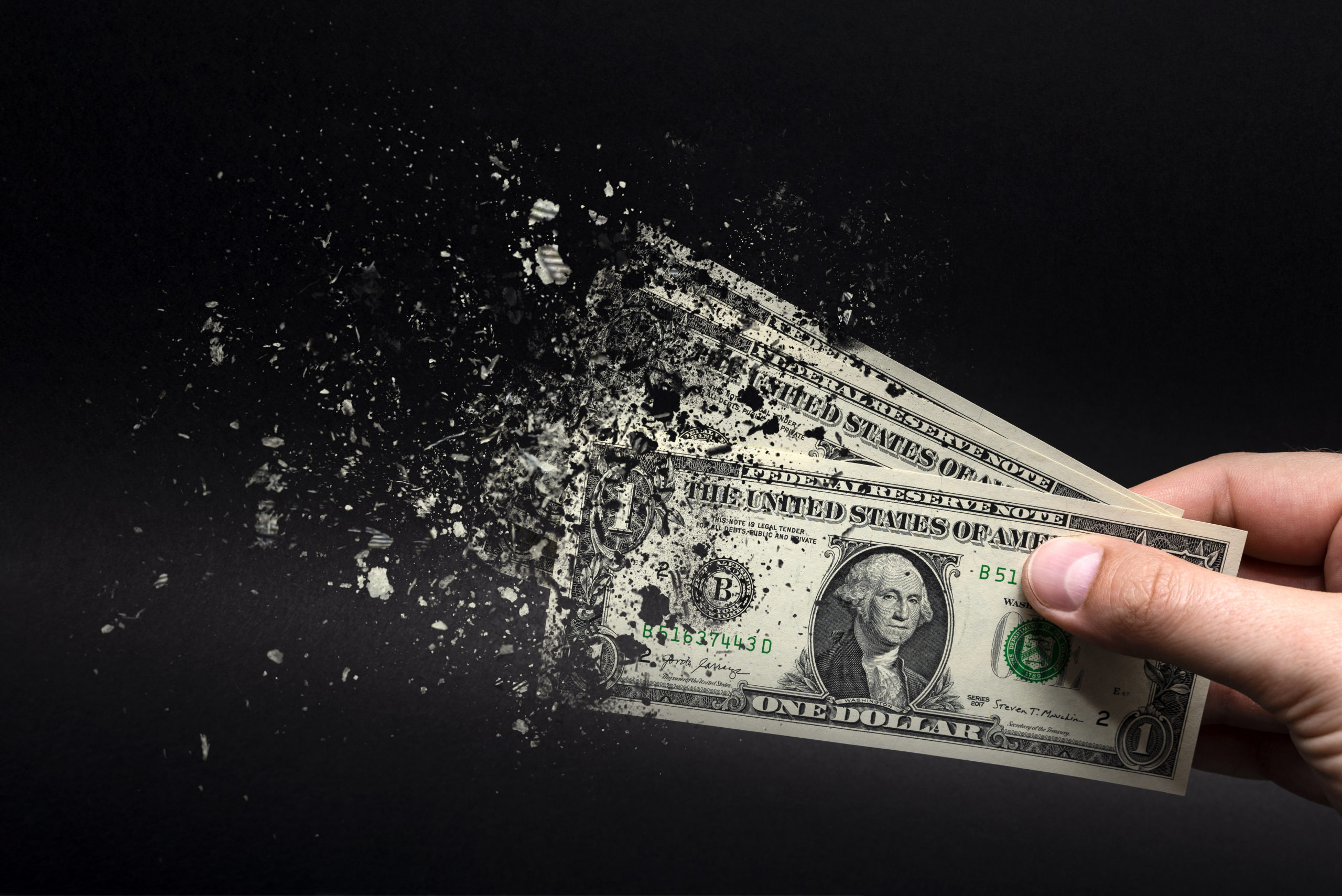We are currently experiencing considerable inflation in the US with the dollar. Some economists define inflation exclusively as the increase in the amount of currency in circulation, period. The more currency chasing the same amount of goods makes each unit of currency worth less, and therefore, the goods cost more.
The US money supply has increased dramatically since the great recession of 2008. As seen in the chart below, since the beginning of the COVID-19 pandemic (yellow bar on the right), M1 money supply (money in circulation plus checkable deposits in banks) has gone vertical due to quantitative easing. We have gone from $1.5 trillion in 2008 to almost $7 trillion now, a multiple of more than four times.
Quantitative Easing is defined as “a monetary policy whereby a central bank purchases pre-determined amounts of government bonds or other financial assets in order to inject money into the economy to expand economic activity.
Inflation has taken off. The increase of dollars in circulation is probably the main cause. Other contributors are the supply chain problems and container ship delays that we are experiencing now. Goods aren’t being produced enough to keep up with demand. When more people are trying to obtain a limited number of goods, prices tend to increase. This is simply a supply and demand issue. Also, when people sense that prices are going up, they tend to purchase goods for the future, before prices go up even further.
The official increase in the CPI, or consumer price index, was published at an annual rate of 7% for December 2021. The CPI is the most widely used measure of inflation. A rate of 7% is the highest seen in this country in the last 40 years.
How is the CPI defined, and what does a 7% rate actually mean? The U.S. Bureau of Labor Statistics (BLS) reports the CPI on a monthly basis, and has been doing so since 1913. The BLS measures the average change in prices that consumers pay for a basket of goods and averages that basket together. The price change is measured on about 80,000 items on a monthly basis. The eight major groups that are in the basket include housing, apparel, food, medical care, transportation, education and communications, recreation, and “other goods and services”. The basket is frequently redefined. The exact measurement of inflation is hard to pin down. Depending on the “basket of goods” that each of us buys, we may be feeling much more or less than a 7% increase in prices.
What does it mean? Let’s say you spent $10,000 on the “basket of goods” in the CPI a year ago. One year later that same basket costs $10,700. Say next year inflation is “only” 5%. That increase gets added to the 7% from the year before, i.e. the 5% added to $10,700, and the same basket costs $11,235. It adds up quickly.
If inflation keeps increasing, but at a decreasing rate, like the above example from 7% to 5%, this is called “disinflation”. Deflation occurs when that basket of goods actually decreases in price.
If your wages are inflating at the same rate as the CPI basket of goods, then it probably doesn’t feel painful. Most of the time, however, wage inflation does not keep up with the inflation of consumer goods. When inflation is raging like it is now, most of us will have to do some belt tightening, look for cheaper substitutes for some items, and do some re-budgeting.
There are other measures of inflation, such as the Producer Price Index, or PPI. This is a measurement of the price change in inputs that producers need, for example iron, steel, wheat, etc. When producers’ inputs are increasing in price, those increases will be passed down to consumers, as the price of those goods increase.
There is a lot of debate about the accuracy of the CPI. Items like retail food and energy costs are included, but not at the proportion that many believe is appropriate. Calculations are based mostly on urban costs, so don’t as accurately reflect the experience families are having in rural communities.
If you are feeling the pinch from inflation, you are not alone. Budgeting and finding alternatives to some normal purchases may be necessary as we wade through this inflationary time.
Definitions of Money Supply:
M1- cash, checking accounts, and travelers checks. More liquid
M2- Is M1 plus savings accounts, Certificates of deposit and money market funds
M3- Is M2 plus large time deposits in banks. Less liquid

